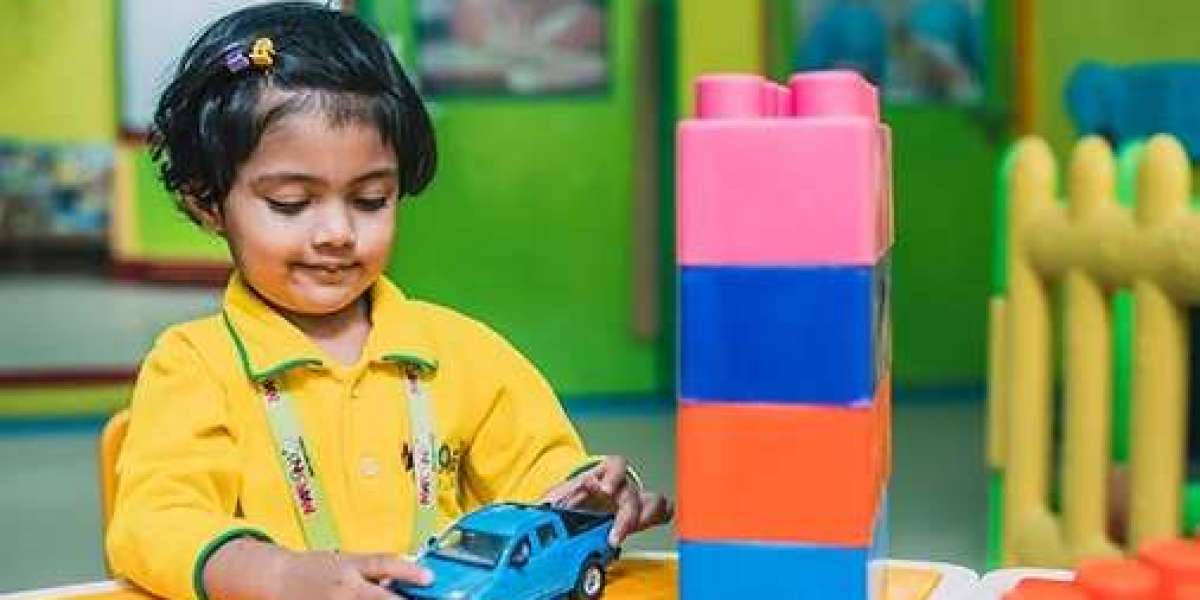A preschool curriculum is much more than letters, numbers, and colors. It’s a roadmap that guides teachers in nurturing young minds, ensuring every activity builds upon the last. At Makoons – the Best Play School in Delhi, this process is known as curriculum mapping, a vital tool to create consistency and progression across all age groups and learning levels.
Let’s explore how curriculum mapping makes early learning structured, holistic, and joyful in every play school classroom.
1. What Is Curriculum Mapping in Preschool?
Curriculum mapping is the process of designing and aligning educational content so that children in different age groups learn progressively. It ensures that what a child learns in the nursery prepares them for kindergarten and beyond.
At Makoons, teachers use curriculum maps as a guide to ensure that every learning experience—be it art, music, storytelling, or outdoor play—connects with developmental milestones.
For example:
Toddlers (1.5–2.5 years) focus on sensory play, colors, and recognition of basic shapes.
Nursery (2.5–3.5 years) builds on that by introducing pre-writing strokes, counting, and phonemic awareness.
Kindergarten (3.5–5 years) prepares children for formal schooling through language, numeracy, and critical thinking exercises.
This step-by-step progression gives children the confidence and readiness to thrive in higher classes.
2. Why Is Curriculum Mapping Important for a Play School?
Many parents believe that preschool is just playtime, but the best play school systems know that play is a foundation for learning. Curriculum mapping ensures that playtime activities have educational intent and measurable outcomes.
Here’s why it matters:
Consistency Across Levels: Teachers follow structured learning goals, ensuring smooth transitions from one age group to another.
Balanced Skill Development: Academic, social, emotional, and motor skills grow in harmony.
Improved Teaching Practices: Educators can identify overlaps or gaps in learning and adjust accordingly.
Personalized Learning: Mapping allows flexibility—teachers can adapt activities based on each child’s learning pace.
In short, curriculum mapping helps play schools deliver quality education through structured fun!
3. The Makoons Approach: A Model of Consistency
At Makoons, the Best Play School in Delhi, curriculum mapping forms the core of their teaching philosophy. The school’s curriculum is designed after in-depth research on child psychology, early education methodologies, and international standards like Montessori and Reggio Emilia.
Key Highlights of the Makoons Curriculum:
Age-Specific Learning Goals: Each age group has clear objectives aligned with developmental stages.
Integrated Learning: Subjects are interconnected—for instance, counting blocks in math is reinforced through building towers in art or playtime.
Emotional Intelligence: Teachers weave in storytelling and group activities that teach empathy, patience, and sharing.
Parent Participation: Regular updates and feedback sessions help parents understand what their children are learning and how they can support at home.
Through this mapping system, Makoons ensures that learning is seamless and enriching, from toddlers to kindergarteners.
4. Building Skills Progressively Across Age Groups
The power of curriculum mapping lies in progression. Here’s how it unfolds across age levels:
a. Toddler Level (1.5–2.5 years):
Focus on exploration and sensory development. Activities include finger painting, storytelling with textures, and sound games. The goal is to spark curiosity.
b. Nursery Level (2.5–3.5 years):
Here, children begin structured learning through phonics, counting songs, and shape sorting. Motor skills and language start to take form.
c. LKG (3.5–4.5 years):
The focus shifts to pre-academic readiness—writing patterns, recognition of numbers, simple word blending, and themed projects.
d. UKG (4.5–5.5 years):
At this level, Makoons ensures children are ready for school life. The emphasis is on conceptual understanding, basic grammar, number sense, teamwork, and creative problem-solving.
This progression ensures no child misses foundational concepts and every activity builds upon the last.
5. How Curriculum Mapping Benefits Teachers and Parents
Curriculum mapping isn’t just beneficial for students—it supports teachers and parents too.
For Teachers:
Offers a clear framework for lesson planning.
Reduces overlap and ensures continuous learning.
Encourages collaboration among teachers of different levels.
For Parents:
Gives clarity on what and how their child is learning.
Helps track developmental milestones more easily.
Builds confidence that their child is receiving a structured yet joyful education at a trusted play school.
6. Bridging the Gap Between Play and Learning
The philosophy at the Best Play School in Delhi is simple—play is the language of learning. Curriculum mapping ensures that every game, rhyme, or craft project has a learning goal behind it.
For example:
Playing with clay develops fine motor control and creativity.
Group games teach teamwork and sharing.
Storytelling builds imagination and language skills.
This balance between fun and focus is what makes Makoons stand out among other play schools.
7. The Outcome: Confident, Curious, and Caring Learners
With well-structured curriculum mapping, Makoons ensures that each child grows confidently through every level. The results are visible—children become:
More independent and expressive.
Ready for primary school both academically and emotionally.
Curious learners who love exploring the world around them.
Consistency in curriculum doesn’t just make learning smooth—it shapes well-rounded individuals who carry a lifelong love for knowledge.
Conclusion
Curriculum mapping might sound like a technical term, but at its heart, it’s about creating a meaningful learning journey. When done right, it turns preschool into a place where every step, every game, and every story matters.
At Makoons – the Best Play School in Delhi, curriculum mapping ensures that children experience continuity, creativity, and confidence as they move from one stage to the next. It’s where play meets purpose, and education becomes a joyful adventure!
Read also: Best Preschool Franchise In Hyderabad
Best Preschool Franchise In Bangaluru














